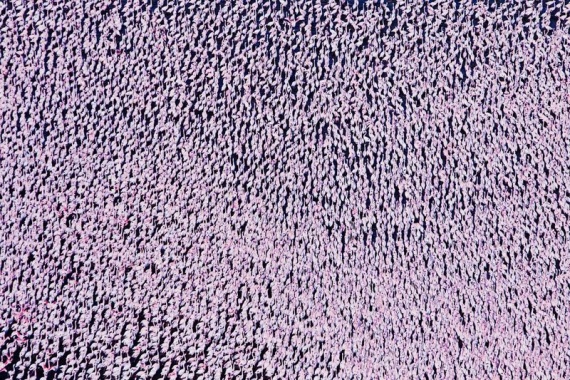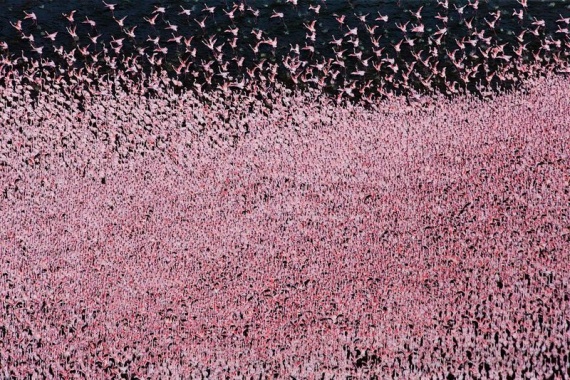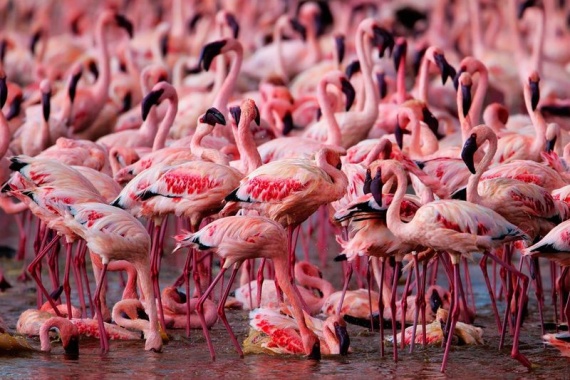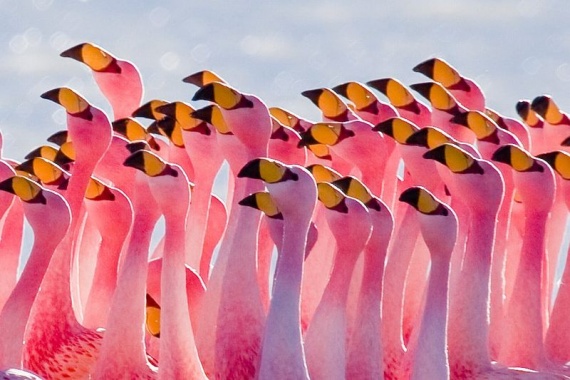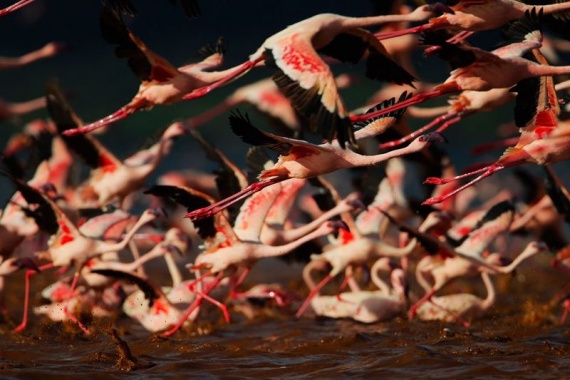1706
Lake million pink flamingos (28 photos)

The name of the lake "Nakuru" in the Masai language means "dusty place", but actually it's pretty swampy, shallow and salty.
It is located in Kenya and is a place of gathering of flamingos.
It is quite a spectacle for tourists, where you can still see a cluster of beautiful pink birds.
If you do not have to watch the spectacle, you are welcome under the cut, at the same time find out why they stand on one leg.
Flamingos here can gain up to 1.5 million, they are located bright pink carpet along the shores of the lake.
There flamingos is greater than anywhere else in the world, millions of individuals. Sitting down and taking off near the coastline, the myriad creatures form an ever-changing pattern of different shades of pink.
Flamingo is sometimes called "fire bird", because some really bright plumage. Occasionally flamingos called "bird of dawn", because other types of feathers gentle - pink.
Thousands and thousands of birds:
Algae and crustaceans that live in these lakes are excellent food for the flamingos, observe that a real pleasure.
At Flamingo long thin legs, flexible neck and feathers, the color of which varies from white to red. Their special hallmark is a massive curved beak down, through which they filter food from the water or sludge.
Pink flamingos feed, hanging his head and leading it from side to side, so the water is filtered through the beak. Their beak and tongue edges are provided with small plates that trap plankton algae, small crustaceans, mollusks and other invertebrates.
The characteristic red or pink color of their plumage gives a special pigment from the shells of small crustaceans. With food he ingested a bird, and then in the plumage.
Flamingo is so unusual bird ("in appearance among the same birds that among the four-legged camel," as they wrote about Russian traveler G. Karelin), that they are many legends.
As already mentioned, Lake Nakuru in Kenya is quite salty. Generally, the salt lake salt concentration may be such that it does not stand none of vertebrate besides flamingos. At this unique event to draw attention Davrin Ch. "How strange, - he said, - that a living being able to live in such places!»
Most of the time spend flamingos in the shallows. These birds fly hard and very reluctantly, mainly only in the event of danger or going astern. They had a long run up, and is already taking off, continue to "run through the air." Then they "clean chassis" and stretched his legs ...
"The flock of flamingos flying are an unforgettable sight - wrote Professor NA Gladkov. - Against the background of reddish-yellow sea, the blue of its smooth surface and a pale blue sky stretches a chain flying flamingos, which, like the garland of light bulbs, the flashing red light, all together turn to the observer gray tones of feathers, like a garland faded. "
Natural enemies of flamingos are foxes, wolves, jackals, and large birds of prey - eagles and falcons, are often settled near the colonies.
When danger when flamingos fly, predator difficult to choose from the pack a certain sacrifice.
Why flamingos stand on one leg? Standing on one leg, flamingos, storks and other long-legged birds use to minimize heat loss in the wind. This loss through uncoated feathers feet because of their unfavorable ratio of surface to volume is large enough, so the birds are trying to keep your feet warm in turn well insulated plumage.
What side seems extremely uncomfortable and difficult position of flamingos requires absolutely no effort. Special physiological adaptation prevents bending the supporting leg, because of which the leg is extended, even without the use of muscular strength.
Life expectancy of these beautiful birds in the wild is unknown, but in captivity they live to be quite respectable standards for bird age - 30 years.
Despite the apparent fragility, flamingos have learned to adapt to the bad living conditions of the most difficult. Maybe that's why archaeologists have found the remains of birds, dating back 30 million years, almost identical to modern flamingos.
Source: p-i-f.livejournal.com.






